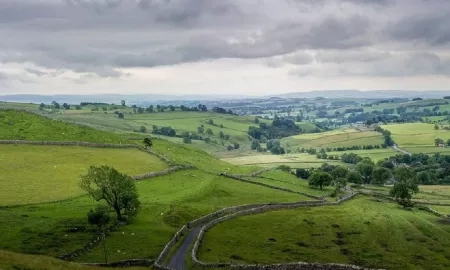With rail improvements and renovation nationwide, railway engineering and construction is a big part of the UK’s industry.

Due to the history of railway land and the activities carried out on it, there is a risk of encountering contamination during – and even after – these works.
Sources of contamination often stem from current or historical on-site activities such as fuel storage and handling, waste disposal, demolition, chemical processing etc. In addition, off site contamination can affect a site via migration as a liquid (including dissolved in groundwater), gas or vapours and sometimes as windblown contaminated dust.
Due to the chemicals contained within the land, contamination may present a risk to users of the site, neighbouring site occupants, and workers on the site carrying out activities as well as the environment (such as surface waters and groundwater). It is therefore very important to ensure that any potential contamination and the risks from it are fully understood before commencing construction works. Key contaminants that are potentially present on rail sites include hydrocarbons and solvents, asbestos containing materials, pesticides, PCBs and contamination from ash/fill materials.
The risk to human health is often greater during construction due to the level of disturbance, potential direct contact and release of dusts, gases and vapours.
In terms of risks to site end users, where there are buildings and hard standing barriers restricting contact, risks from contaminated soils are lower but, conversely, gases and vapours present more of a hazard where excavations or buildings provide a potential space in which to accumulate, therefore affecting people.
When assessing the potential for contamination, a desk study (Phase 1 investigation) is usually carried out, followed by a Phase II intrusive site investigation where required. This involves drilling into the ground to gather samples for laboratory analysis, the results of which can form recommendations for risk mitigation measures.
Control measures and risk mitigation put into place depend on whether the site is currently in the construction phase, whether the site is currently used, or intended to be used in the long-term.
Construction phase risk mitigation
Specific control and monitoring measures – put in place by the client and contractor – will help to mitigate the short term environmental and health risks that may be significant during construction. Typical requirements may include:
- A construction worker risk assessment and management plan; this would cover identified contaminants, exposure scenarios and some or all of a regime of controls such as staff training, dust and odour suppression, decontamination procedures, PPE, RPE and staff medicals may be required
- An environmental management plan to detail the measures to prevent spillages, runoff, noise, vapour and other environmental risks may well be required
- A waste management plan to define the waste handling, segregation, storage, classification and disposal procedures
- A materials management plan (MMP) to enable excavated soils that are suitable for reuse and required in the construction works to be managed and reused without becoming a controlled waste and affected by waste management law
- Occupational health and environmental monitoring – to include personal exposure monitoring, regular air and water sampling and also noise and odour assessments
- Verification testing and reporting - to confirm that the remediation/risk management design has been implemented
Long-term site use risk mitigation
Risks to the long term occupants or users of a site would need to be mitigated by suitable remediation measures.
Typical remedial measures that may be required can include:
- Excavation and removal/treatment of unsuitable or contaminated soils. Soils that can be treated to acceptable reduced levels of contamination may then be able to be retained on site under the MMP
- In-situ treatment of soils
- In-situ treatment of groundwater
- Barriers to prevent the migration of contamination
- Provision of barriers to cut off potential exposure pathways, such as hard surfaces as part of the site development or ‘clean’ soils overlaying contaminated soils beneath
- Specific measures within building design to minimise gas or vapour ingress – the specific requirements depend on the level of risk but could include sealing of service entries through ground slabs up to membranes and passive or active venting systems
Many of these measures would be checked and verified within the construction phase verification report, but any follow up or longer term measures may require additional verification and monitoring reports to be produced across several months or years of the site’s occupation.
Want to find out more about SOCOTEC's contaminated land investigation services?

You might also like







Add new comment